PV column
Photovoltaic
2023/01/21
Tokyo Metropolitan Government’s “the mandatory installation of photovoltaic power generation for new buildings”
There has been a great response to the Tokyo Metropolitan Government’s announcement in 2022 of “the mandatory installation of photovoltaic power generation for new buildings” and the term “the mandatory installation” seems to have made a particularly strong impression. The Tokyo Metropolitan Government’s Bureau of Environment’s solar power portal site provides detailed explanations of not only the “subject of the mandatory installation,” but also the implementation date of the program (April 2025), “benefits of installing PV system,” “actual costs,” and other details. We will provide an overview of the site and introduce the results of our simulation calculations.
The following is an excerpt from the Tokyo Metropolitan Government’s Bureau of Environment’s solar portal site, which provides an overview of this program. For more details, please refer to this site and ”Photovoltaic Power Generation Installation: A New Guide to Understanding Photovoltaic Power Generation” (PDF: 7,118KB).
Who is obliged to install solar panels
Q2 Who will be obligated to install solar panels?
A2 Businesses such as house builders.
(Note)
- The obligation is targeted at major businesses (about 50 companies are expected) that construct buildings (houses and buildings) of 20,000 square meters or more per year, which is about half of the number of new buildings constructed in Tokyo each year.
- Only new construction is eligible; existing properties are not eligible.
Installation Criteria
Q4 Do businesses subject to the obligation have to install solar panels even on houses with poor sunlight or small spaces?
A4 This system requires obligated housing suppliers to install solar panels based on the location conditions, such as sunlight, and the shape of individual houses, such as the size of the house roof, and to achieve the installation standards for the entire building to be supplied.
(Note)
- The decision on which buildings to install solar panels by businesses subject to the obligation will be made based on the location conditions such as sunlight and the shape of the house.
- Note that houses, etc. with roof areas below a certain size can be excluded from the solar panel installation target.
Trends in overseas cities and local municipalities in Japan
Q7 Is the mandatory installation of solar panels something that only Tokyo will do?
A7 Overseas cities and local municipalities in Japan are also taking steps toward decarbonization.
(Note)
- In the U.S., New York City mandated solar power generation or greening for new buildings and buildings undergoing large-scale roof repair in 2019, and after 2020, California also mandated solar power installation for all new residential buildings in the state.
- In Kyoto Prefecture and City of Kyoto, installation is mandatory for new buildings above a certain size starting in 2022. Gunma Prefecture is planning to make installation mandatory, and Kawasaki City is also considering making it mandatory.
Power generation efficiency of solar panels
Q14 I understand that solar panels cannot generate electricity at night or during bad weather, but what is the annual amount of electricity generated?
A14 If 4kW solar panels are installed on the roof of a house, we can expect to generate about 4,000kWh per year, which is equivalent to about 80% of the average annual electricity consumption of a typical household.
(Note)
- Of the 8,760 hours per year (365 days x 24 hours), the percentage available for power generation by solar panels (facility utilization rate) is 13.6%*1 on average. This is due to the fact that there are times during the night when no power is generated, as well as certain times during rainy weather when the amount of power generated is lower than during sunny weather.
- Assuming an annual system power generation of approximately 1,000 kWh*2 per 1kW installed capacity, annual power generation of approximately 4,000 kWh can be expected when 4kW solar panels are installed on a residential roof. If we assume that the average annual electricity consumption of an average household is 4,573kWh*3, this would cover about 80% of the annual electricity needs of a year.
*1. Cited from the Procurement Price Calculation Committee, Ministry of Economy, Trade and Industry (February 4, 2022)
*2. Calculation example when solar panels are installed at a 30 degree angle to the horizontal and facing due south. The amount of electricity generated will vary depending on the region, orientation of the solar panels, and angle of inclination. (Quoted from the Japan Photovoltaic Energy Association website)
*3. Quoted from the Japan Photovoltaic Energy Association Labeling guidelines (FY2021)
Maintenance and management of solar panels
Q17 What kind of maintenance is required after the solar panels are installed? How much does it cost to hire a professional contractor?
A17 In a typical residential area, it is hardly necessary to climb on the roof to clean it regularly, but we recommend that you check the amount of electricity generated on a daily basis.
(Note)
- On a daily basis, dust and debris on the surface of the solar panels may reduce the amount of electricity generated, but it is said that rain and wind will wash it away and restore the panels to almost their original capacity, so in a typical residential area, there is little need to climb on the roof to clean them on a regular basis.
- Inspections may occur during the installation period, but the cost is said to be about 30,000 yen per inspection by a professional contractor.
- In addition, the equipment attached to the solar panels (PV inverters) needs to be replaced once every 15 years, which is shorter than the life of the solar panels (25 to 30 years), and the renewal cost is said to be about 230,000 yen.
- Please check the amount of power generated on a daily basis and contact the manufacturer or distributor if you observe a decrease in power generation.
Estimated results from our simulation
Although reference values for the effect of introducing a PV system (4kW size) are provided in the data on the solar power portal site of the Bureau of Environment of the Tokyo Metropolitan Government, for a more detailed comparison, we used our simulation to estimate the amount of electricity generated by a PV system at 53 locations (each ward, city, and county) in Tokyo. The conditions for estimation are as follows:
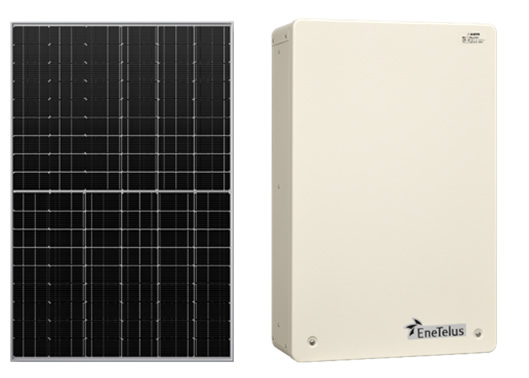
- Simulation sites (53 locations in Tokyo):
Each ward, city, town, and village office (all 23 wards, all 26 cities, and 4 towns and villages in the county, excluding islands) - Solar radiation data:
Combination of MONSOLA-11 and METPV-11, databases on solar radiation published by the New Energy and Industrial Technology Development Organization (NEDO). - How to adopt solar radiation data:
Solar radiation data at the shortest distance from the location of each office locations. Because the number of adopted solar radiation data (9 locations) is smaller than the number of simulation locations (53 locations), the power generation simulation results for neighboring areas are also identical. - PV system overview:
Solar panel (module): 415 watt x 15 panels (6,225 watts ≒ 6.23kW)
PV inverter: Single-phase 5.5kW (efficiency 96.0%)x 1pc.
Roof azimuth: (1) 0 degrees to the south, (2) 45 degrees to the southeast/southwest, (3) 90 degrees to the east and west
Roof tilt angle: 16.7 degrees (3″ slope)
Table 1. Annual power generation in Tokyo (53 locations), for each month, orientation south:
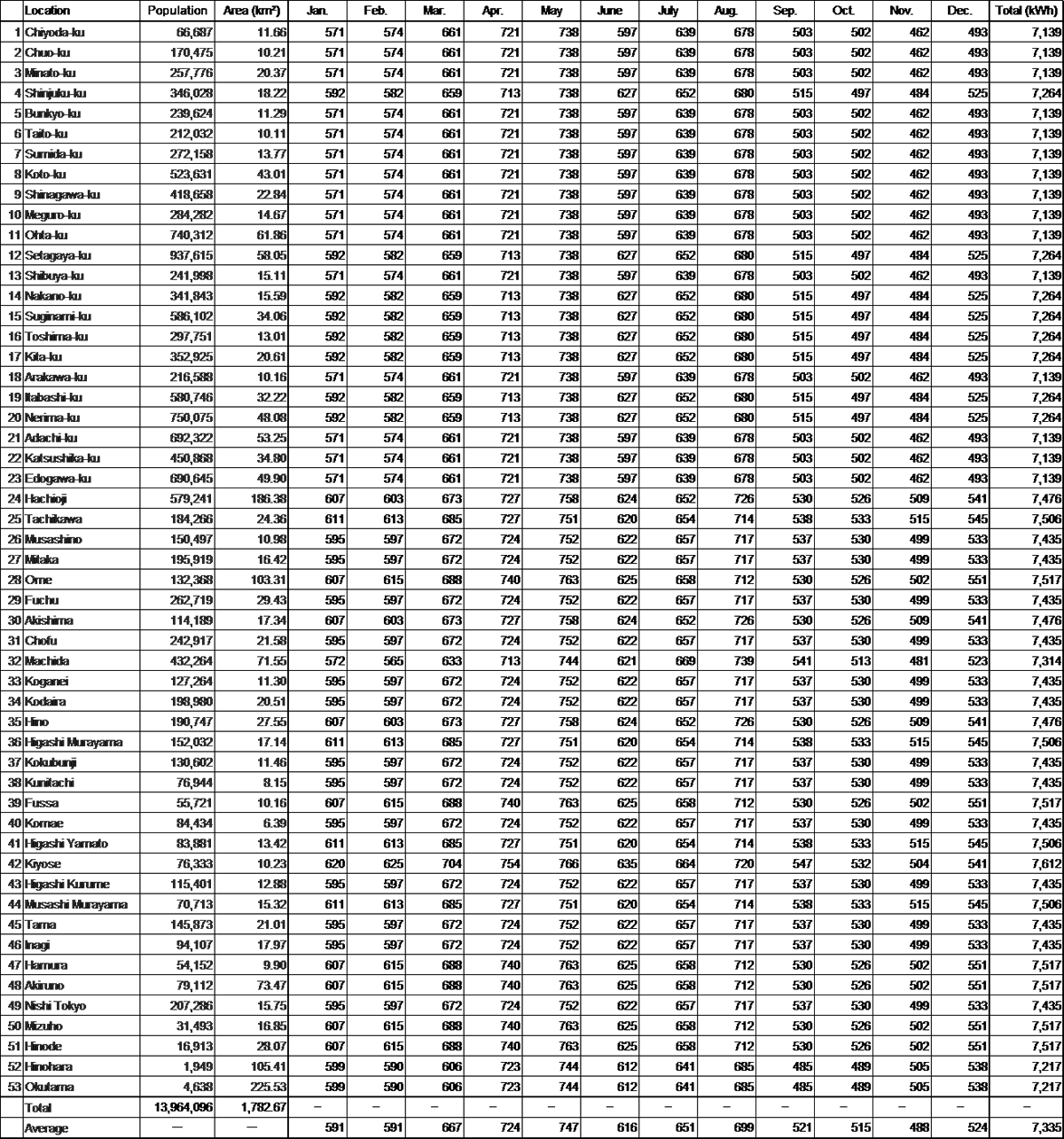
Table 2. Annual power generation in Tokyo (53 locations), for each month, orientation southeast/southwest:
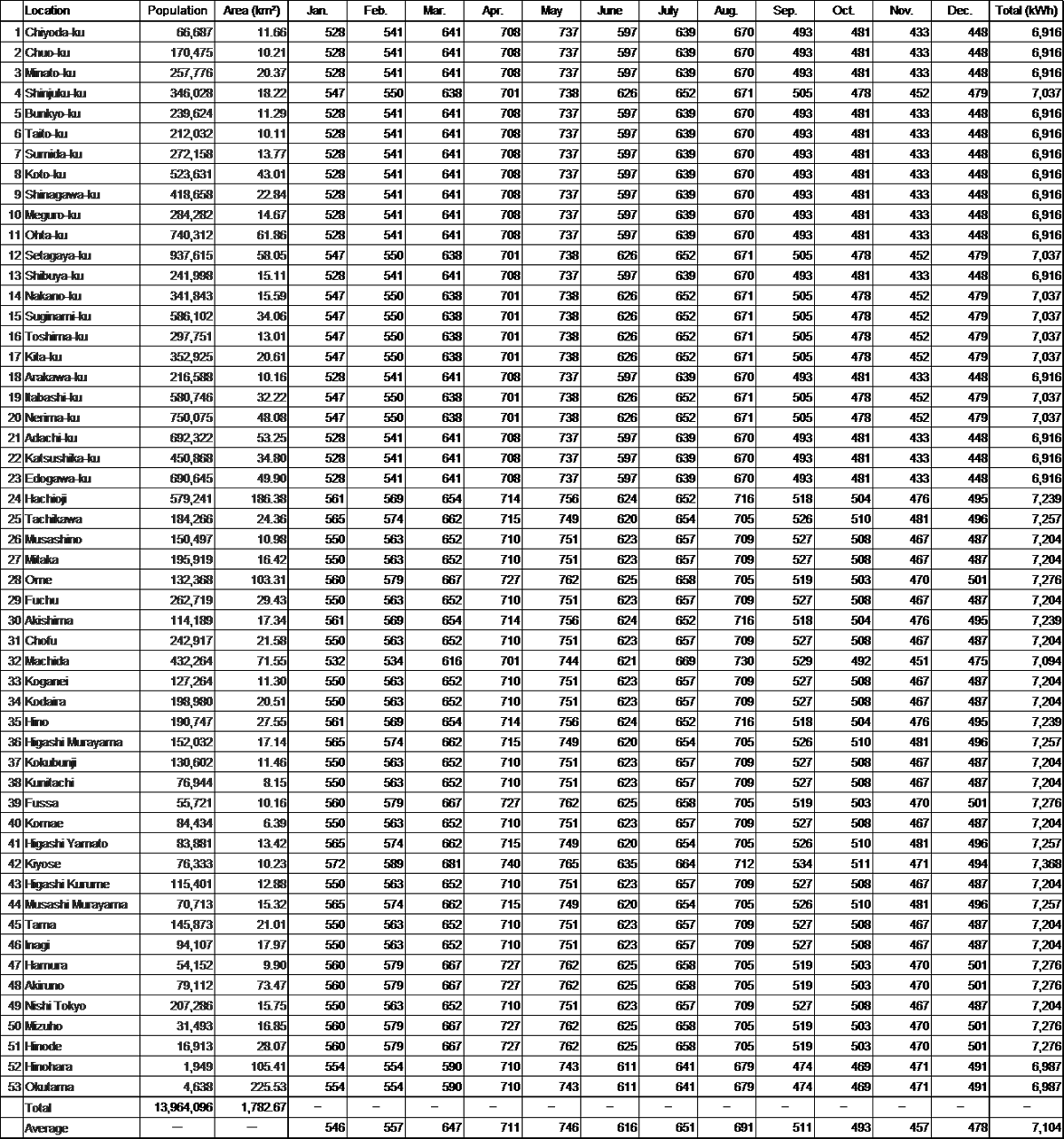
Table 3. Annual power generation in Tokyo (53 locations), for each month, orientation east/west:
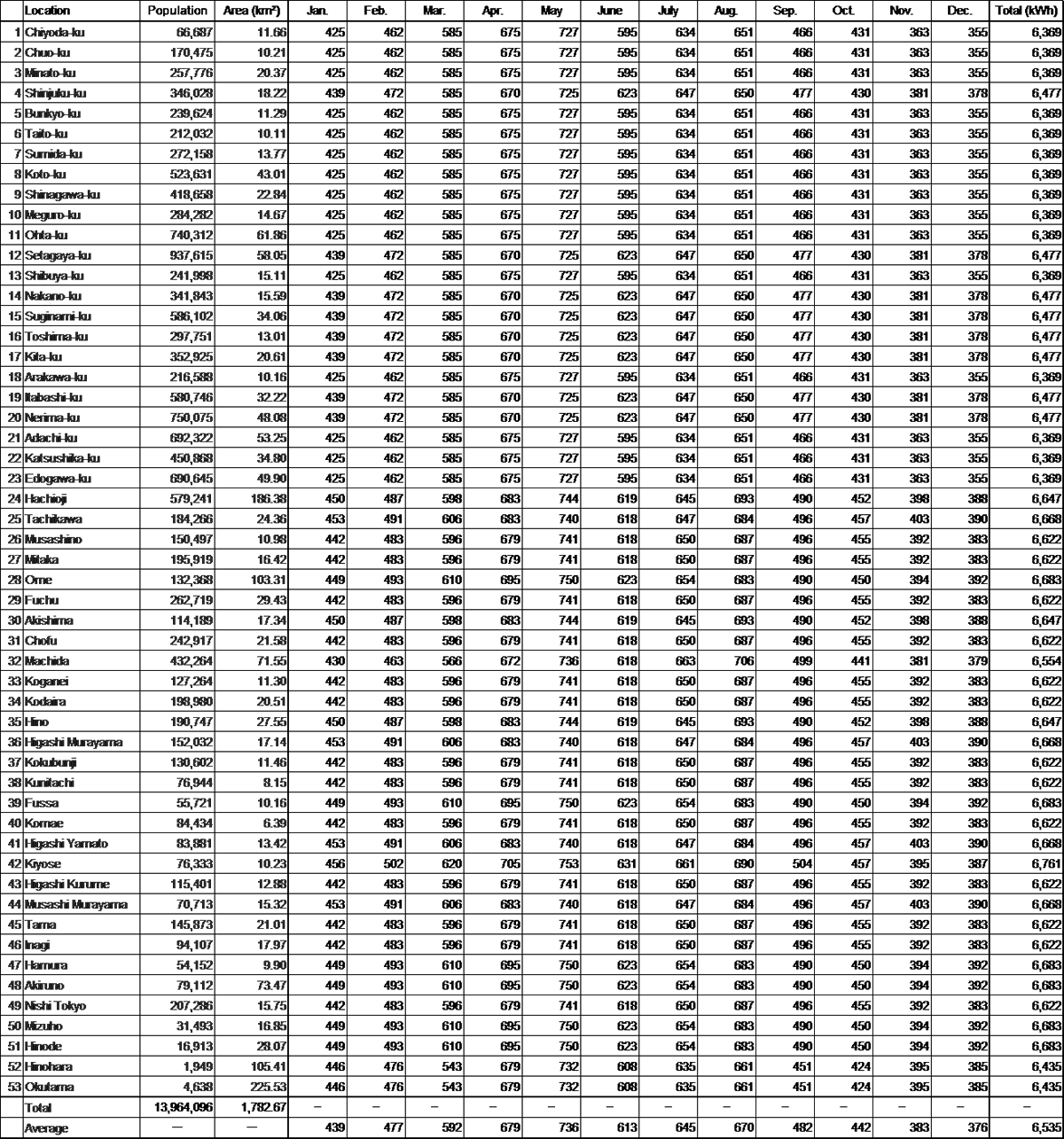
The power generation simulations for the 53 locations in Tokyo (Table 1: orientation south, Table 2: orientation southeast/southwest, and Table 3: orientation east/west) can be downloaded here.
Example of a self-consumption simulation for a house in Kokubunji City, Tokyo:
Location: Kokubunji city in Tokyo
Building area: approx. 85 m2
Roof azimuth: orientation southeast 45 deg.
Roof tilt angle: 16.7 deg. (3″ slope)
PV system overview:
Solar panel (module): 415 watt x 15 panels (6,225 watts ≒ 6.23kW)
PV inverter: Single-phase 5.5kW (efficiency 96.0%)x 1pc.
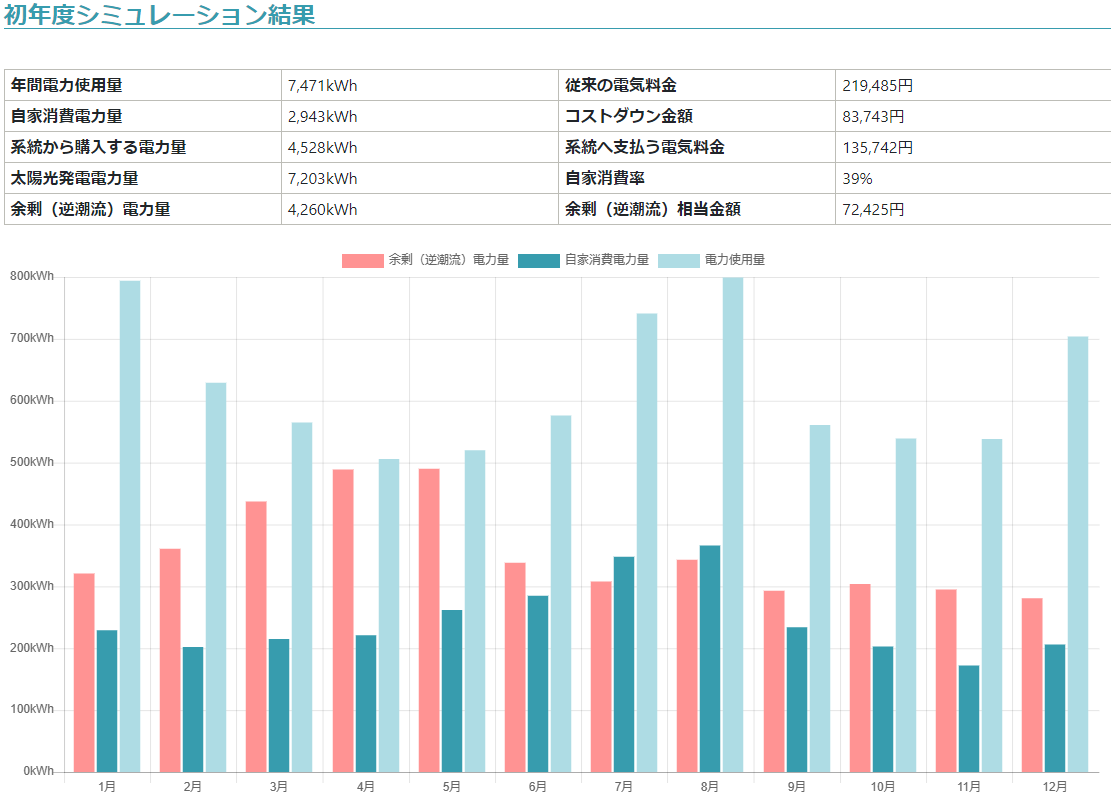
The electricity consumption and supply (as estimated above) for the house and the PV system are as follows:
- the PV system generates 7,203 kWh per year, of which 2,943 kWh is for in-house consumption and 4,260 kWh is for surplus electricity.
- of the 7,471 kWh of electricity consumption annually by the house after the installation of the PV system, 2,943 kWh (39.4%) was supplied by the PV system and 4,528 kWh (60.6%) was purchased from the utility company.
If storage batteries are installed in this photovoltaic system, the maximum cost-effectiveness of the storage batteries is
- Surplus electricity 4,260kWh (x charge/discharge efficiency %) x (unit price of electricity from utility company XX yen/kWh – unit price of surplus electricity 17 yen/kWh)
Please feel free to contact us for any inquiries regarding the evaluation of the installation of PV systems as well as residential roof-top PV system in Tokyo.

